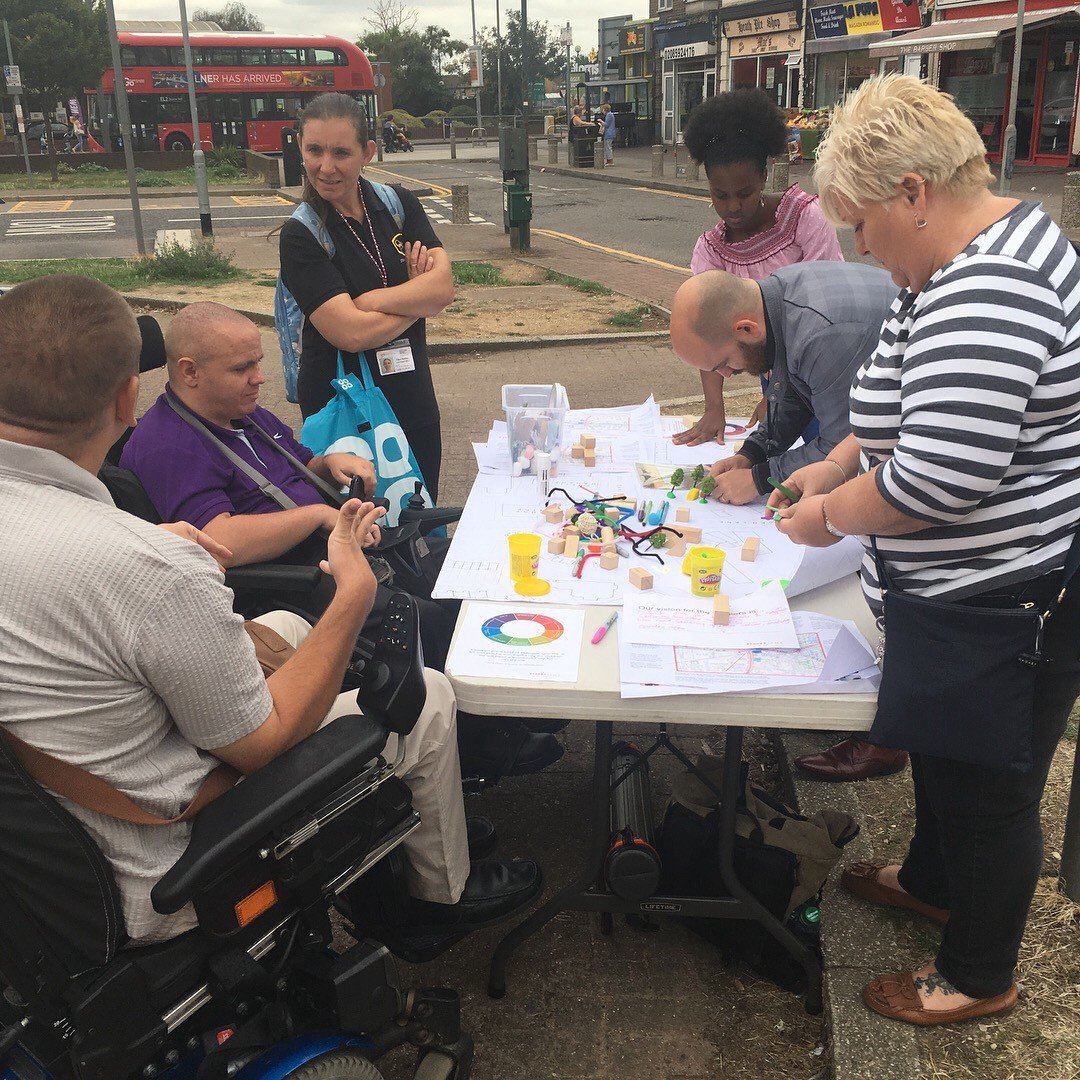Is it time to get rid of the ‘master’ plan & embrace The People’s Plan?
Temporary small scale, low cost improvements to St Awdry’s Walk, Barking
What’s the problem?
Masterplanning shapes the future of our neighbourhoods and communities, deciding what kind of enterprises there will be space for, how many homes, community amenities and who they will be for? Many pieces of information are gathered together for the development of these plans and more and more communities are being invited to shape and influence these long-term priorities from the start of the process. This is great, but… in low income communities where people are often in a state of hyper in-security in their own lives, navigating low paid insecure work, juggling care responsibilities and just about managing to put food on the table these conversation have a limited sense of relevance and understandably lack meaning. If people don’t know what’s around the corner for their own lives next week or month, how can they be expected to get engaged around conversations shaping what plans the local government may or may not implement in their neighbourhoods over the next 3–5 years. Many would be forgiven for also assuming that the neighbourhood will most likely have changed by then and they might well be at risk of being priced out.
All these issues need to be fixed — are interlinked at a system level. This idea doesn’t fix the broken model surrounding land value, housing, affordability and gentrification but… it just might be a small start to iterating on and improving one part of this broken larger system.
What’s the idea?
Instead of putting all the focus on the intangible, lengthy visions for the future which can often end up pushing for generic sounding priorities that can lack local character, voice and meaning why not use smaller commissions to creatively tackle the current issues within the public realm or built environment in creative, meaningful and low cost ways that will enable the trust building process to begin and for people to feed in to something real — that affects their everyday, whilst sharing their hopes and longer term aspirations for their neighbourhoods. From our work we’ve seen first-hand the impact of small, locally led, low cost projects that reimagine small bits of unused public space, back alleyways or unloved shopping parades.
Instead of having conversations about the future and extracting information from communities we propose to work differently. Gathering insights through testing and learning together — action based on the current realities that communities face such as areas where people feel unsafe, or unloved areas attracting criminal activity or fly-tipping. Start where people are at before focussing on the aspirational future that may or may not be delivered in many years’ time.
Design workshop to explore potential uses for an empty space in the middle of a car park
How does it work?
Part citizen assembly, part community action group The People’s Plan will elicit the same long-term objectives from community members needed to shape a future masterplan but will do so in a much more equitable way. Sharing power with community groups and diverse members of the community to crowdsource prioritise and ideas and test out creative solutions to tackle sticky and complex issues re. areas that feel unsafe or unloved, high streets that lack character or identity, etc. Bringing the people who are around the table to commission a masterplanning process, around the table with community members. Hearing from them about what spaces need an injection of creativity, maintenance or investment. Using an imaginative and creative collaborative design process to guide the development of The People’s Plan, the resulting outcomes will not only shape a long term vision from a community perspective but also see tangible experiments in the public realm to solve important issues identified by that community.
What we’ve learnt from years of facilitating design led collaborative processes with community members to tackle tricky place based issues and improve alleyways that don’t feel safe, unloved footbridges, underpasses and stationsis that it’s these daily experiences that matter. When someone feels unsafe or fearful in their neighbourhood due to other people, things that have happened to them or stories of what has happened to other people, then these micro experiences can stifle the imagination of possibility and anything beyond this. We know our environment shapes us — places that aren’t cared for, tell us we’re not cared for either. Our collective imagination also suffers. Before any long term grand designs, we owe it to people to work to first creatively shape and improve the spaces we do share.


